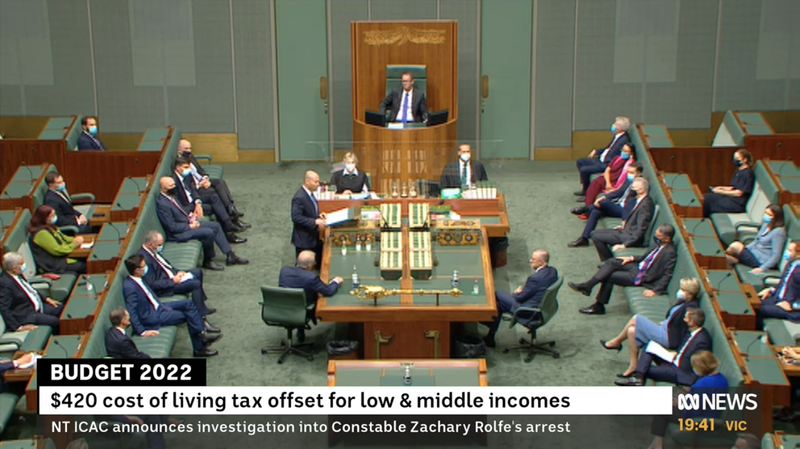NAVA responds to the Federal Budget
Image: Treasurer Josh Frydenberg delivering the 2022-2023 Budget at Australian Parliament House, Canberra. Screenshot from ABC News, 29 March 2022.
Image: Treasurer Josh Frydenberg delivering the 2022-2023 Budget at Australian Parliament House, Canberra. Screenshot from ABC News, 29 March 2022.

On Tuesday night, the Treasurer opened his budget speech by acknowledging “the global pandemic is not over” and “devastating floods (are battering) our communities”. For a moment, we could have believed he was about to offer some hope to the thousands of visual artists, arts workers, galleries and organisations hard hit by the 2019 bushfires, the ongoing Covid-19 pandemic and resulting recession, and now, for far too many, the 2022 devastating flood emergency.
NAVA welcomes the $20 million extension to the Government’s Restart Investment to Support and Expand (RISE) initiative. Criteria for this program was updated in June and again in October last year to expand eligibility to independent artists, local government and university run galleries as well as rescheduling costs for projects impacted by Covid-19 restrictions. We encourage the visual arts sector to start working on applications for RISE and stay tuned for an announcement of opening and closing dates soon.
Beyond that, there is a lot to be disappointed about in this year’s federal budget. While this budget was an opportunity to turn things around, it not only lacks long-term solutions to our current crises, it also presents a decline in arts funding.
NAVA has been advocating for crisis relief funding for independent visual artists, a federally-backed insurance scheme inclusive of the visual arts and a new fund to bolster the creation of artwork through a tiered, highly targeted funding stream available to early career artists, right through to the mid-career artists whose career trajectories have taken a hit from the impacts of the pandemic. Recent research undertaken by NAVA has again revealed the ongoing impacts of the pandemic on an already weakened visual arts sector. Visual artists continue to report concerning declines in artwork sales, art making and confidence while organisations remain apprehensive over worsening prospects for their sustainability.
In this year’s budget, we had hoped to see the Government invest ambitiously in the arts through a considered approach to long-term sustainability. This was a pivotal time for the Government to draw on the findings of their own inquiry into the arts and the recommendations of the Sculpting a National Cultural Plan: Igniting a post-COVID economy for the arts released last year. The report offers really great groundwork for arts policy, and demonstrates a national recognition of the arts as a major contributor to the social, cultural and economic wealth of Australia.
With the upcoming federal election in May, it is an important time to strengthen the case for arts policy and investment, and come out in numbers to engage your local federal candidates.
To make arts and culture an important issue for candidates they must hear voices within and beyond the arts sector raising their concerns for the current state of the Australian arts industry. The voters are your audiences, stakeholders, families and friends.
Visual arts and culture is everywhere: in the cities, in the regions, in remote communities, in every state and territory. Research shows us that Australians love the arts – 98% of us engage with it and 45% of us create art.
Visual arts and culture is also essential: for education, jobs, wellbeing, culture, and the expression of our national identity.
Rebuilding a productive and vibrant arts ecology would be achieved through strategic investment for lasting impact.
NAVA has released its #VoteForArt campaign which outlines our five key policy priorities for a robust creative economy and emboldened creative communities. Let’s work together to ensure all candidates commit to investing in Australia’s creative future.